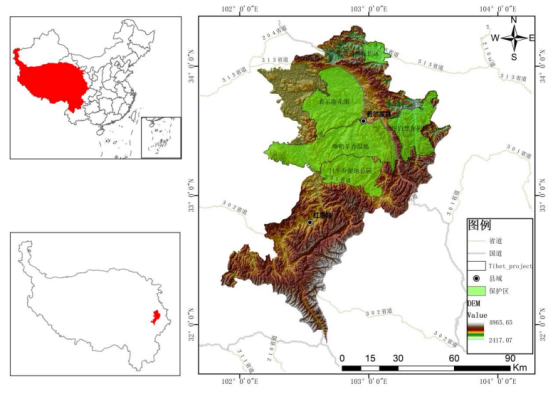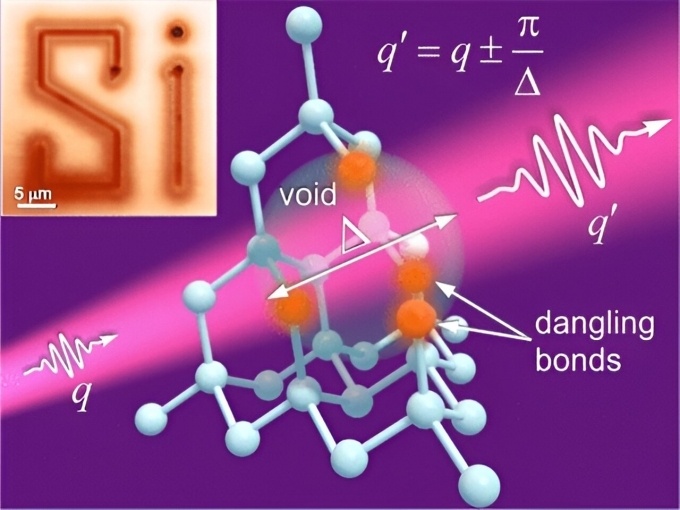ETNew, Odd Species Discovered Down South Video Research in Action
A new species of sea anemone, Edwardsiella andrillae, anchored in the ice at the underside of the Ross Ice Shelf, Antarctica one anemone has an unidentified organism, nicknamed the “eggroll,” holding on to it. Credit: NSF. View full size image
This Research in Action article was provided to LiveScience in partnership with the National Science Foundation.
Whileusing a camera-equipped robot to survey the environment under Antarctica‘s Ross Ice Shelf, paleoclimate researchers unexpectedly discovered a species of sea anemones that live in the ice.
The team of scientists and engineers, who are part of the National Science Foundation (NSF)-funded Antarctic Geological Drilling (ANDRILL) Program, reported that there were thousands upon thousands of the small anemones.
Though other sea anemones have been found in Antarctica, this species is the first reported ice dweller. While most sea anemones live on or in the seafloor, these anemones live upside down, burrowed in ice, their tentacles protruding into frigid water like flowers from a ceiling.
The white anemones have been named Edwardsiella andrillae, in honor of the ANDRILL Program.
Scott Borg, who heads the Antarctic Sciences Section in NSF’s Division of Polar Programs, noted that the discovery illustrates how much remains both unknown and unexplored by scientists, even after more than 50 years of active U.S. research on the southernmost continent.
The discovery was “total serendipity,” said Frank Rack, executive director of the ANDRILL Science Management Office at the University of Nebraska-Lincoln. “When we looked up at the bottom of the ice shelf, there they were.”
Scientists had lowered the robot — a 4.5-foot cylinder equipped with two cameras — into a hole bored through the 270-meter-thick shelf of ice that extends over 600 miles northward from the grounding zone of the West Antarctic Ice Sheet into the Ross Sea.
Their mission was to provide environmental data for modeling the behavior of the ANDRILL drill string (a length of pipe extending through the water column and into the sea floor through which drilling fluids are circulated and core samples retrieved)。 They didn‘t expect to discover organisms in the ice, and surely not a new species.
This remotely operated vehicle, known as SCINI (Submersible Capable of under Ice Navigation and Imaging) travels under the Antarctic ice to photograph benthic communities. It was used by researcher Stacy Kim for her biological research and, with modification, by ANDRILL in the discovery of the new sea anemone species.Credit: Dr. Stacy Kim, National Science Foundation.View full size image
The anemones measured less than an inch long in their contracted state — though they get three to four times longer in their relaxed state, researchers said. Each features 20 to 24 tentacles, an inner ring of eight longer tentacles and an outer ring of 12 to 16 tentacles.
Many mysteries remain about the creatures, such as how they burrow into hard ice, survive without freezing and how they reproduce. There is no evidence of what they eat, although they likely feed on plankton in the water flowing beneath the ice shelf, researchers said.
In addition to the anemones, the scientists saw fish that swam upside down, the ice shelf serving as the floor of their submarine world, as well as a bizarre little creature they dubbed “the eggroll,” a four-inch-long cylinder that seemed to swim using appendages at both ends of its body.
自動翻譯僅供參考
在南極發現新奇物種 ETNew,奇種發現南下視頻研究Action
海葵,愛德華andrillae,停泊在冰中的
海葵的一個新種,Edwardsiella andrillae,被錨定在南極羅斯冰架的冰下,一頭海葵有一種未知的有機體,綽號“EgGrl”,緊緊抓住它。圖片來源:美國國家科學基金會。查看原圖
本研究在行動文章提供給生活科學合作與美國國家科學基金會。
Whileusing帶攝像頭的機器人調查在南極羅斯冰架環境,古氣候研究人員意外地發現一個物種海葵那住在冰。
科學家和工程師,誰是美國國家科學基金會(NSF)的一部分的團隊資助的南極地質鉆探(ANDRILL)計劃,報告說,成千上萬的小海葵。
雖然其他海葵已經在南極洲被發現,這個品種是首次報道的冰居民。雖然大多數海葵住上或在海底,這些海葵生活顛倒,鉆地的冰,他們的觸角伸進冰冷的水一樣從天花板。
花
白色的海葵被命名為愛德華andrillae,以紀念ANDRILL計劃。
Scott博格,誰負責的南極科學科極地項目NSF司獲悉,此次發現說明了仍有許多未知雙方并未開發的科學家,即使在50年以上的大陸最南端美國積極的研究。
發現是 總情緣, 弗蘭克說機架中,ANDRILL科學管理辦公室在內布拉斯加 - 林肯大學的執行董事。 當我們抬頭看著冰架底部,他們在那里與
科學家們已經降低了機器人 mdash 一個4.5英尺的汽缸配有兩個攝像頭 mdash 到通過270米厚的陸架冰的從南極西部冰原到羅斯海。
的接地區域600英里向北延伸鉆一個洞,
他們的任務是為模擬的行為提供了環境數據ANDRILL鉆柱(管通過水柱和入海底,通過該鉆井液被循環和巖心樣品檢索延伸的長度)。他們沒想到發現了冰的有機體,而當然不是一個新的物種。
該遙控潛水器,稱為SCINI(潛水還能在冰上導航和成像)南極冰層下前往拍攝底棲生物群落。這是在新的海葵species.Credit的發現所使用的研究員斯泰西金為她的生物學研究,并與修改,通過ANDRILL:斯泰西Kim博士,美國國家科學Foundation.View原圖
海葵測不到一個在其收縮狀態 mdash英寸長 雖然他們拿到三四倍的時間在他們的松弛狀態,研究人員說。每間都設有20至24觸角,八長觸須內圈和12至16觸角外圈。
許多未解之謎依然看好的生物,比如他們如何鉆入堅冰,生存無嚴寒以及它們是如何繁衍后代。目前沒有證據表明他們吃的東西,雖然他們在流動冰架下方的水中浮游生物可能的飼料,研究人員說。
除了海葵,科學家們看到魚游倒掛,冰架作為地板的海底世界,還有一個奇怪的小生物,他們被稱為 在eggroll, 四英寸長的圓柱體,似乎使用的附屬物,在它的身上.
-
機器人
+關注
關注
211文章
28632瀏覽量
208041
發布評論請先 登錄
相關推薦
Vivo籌備新子品牌Jovi,疑似新機現身Geekbench
PCM1803采樣音頻,在還原數據時發現采樣的音頻被放大了3倍,為什么?
使用PCM1804時,發現ADC在轉換過程中產生3次諧波較大,為什么?
借助AI拓展營銷和創意潛能
LM2903B有擊穿現象的原因?
基于無人機高光譜謠感的蘊地退化指示物種的識別

元服務體驗-服務發現
臺積電嘉義CoWoS廠施工暫停,疑似發現古遺跡
ECAD無法PUSH,疑似文件過大
業界首款柔性算力新物種,當屬華為云新上市的云耀 X 實例

研究團隊發現光的新特性





 在南極發現疑似海葵的新奇物種
在南極發現疑似海葵的新奇物種










評論